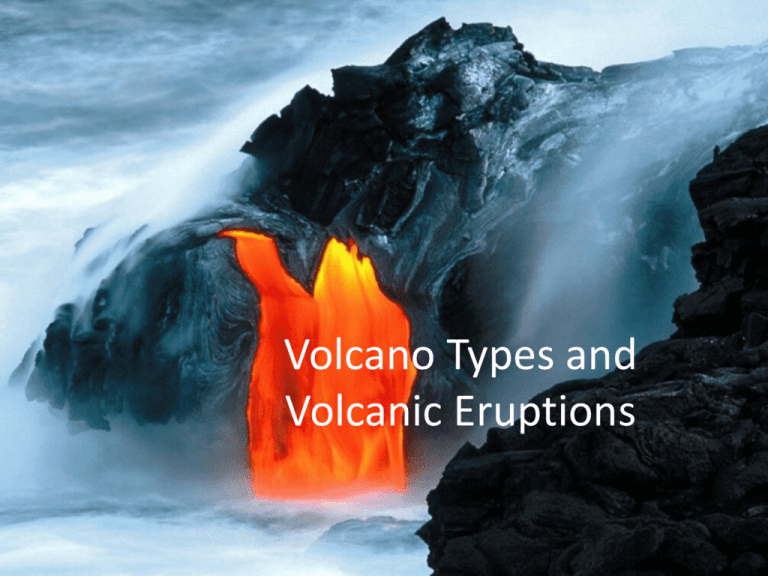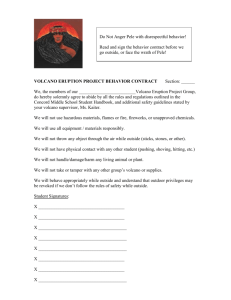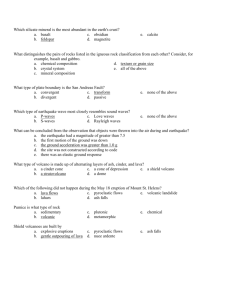Volcano Types and Volcanic Eruptions
advertisement

Volcano Types and Volcanic Eruptions 1. Why Volcanoes Erupt: • The F of expanding gas builds and pushes magma through the vent 2. Major Factors in Eruptions: • a. The amount of trapped gas – CO2 and Sulfur • b. Silica Content – The more silica, the more explosive C. Common Volcano Products –Ash: • Fine rock particles, less than 1/10 of an inch C. Common Volcano Products – Bombs/Cinder • Rock pieces at least 2.5 inches to many feet C. Common Volcano Products • Pyroclastic Flow: – Mix of hot ash, bombs, gas, pumice and glass that can travel up to 100 miles per hour. 3. Common Volcano Types • Shield Volcano – Structure – Composition • Layers of built up lava – Eruption Type • Quiet – Lava Type • Pahoehoe – Hazards • Burning land, ash covered – Example • Hawaiian Islands 3. Common Volcano Types • Cinder Cone – Structure – Composition • Layers of ash, cinders and bombs – Eruption Type • Explosive – Lava Type • Aa – Hazards • Deadly gasses, landslides, avalanche, pyroclastic flow – Example: • Paricutin, Mexico 3. Common Volcano Types • Composite – Structure – Composition • Alternate lava and ash – Eruption Type • Alternate Quiet and explosive – Lava Type • Pahoehoe and Aa – Hazards • Alternate – Example: • Mt. St. Helens 4. Volcanic Activity • a. Common Volcano Locations Volcanoes per Continent So e ro p Eu ia As Af r An ica ta rc tic a ut h Au st ra l i Am a N er or ic th Am a er ica 250 200 150 100 50 0 Australia South America North America Asia Europe Africa Antarctica b. Volcanic Eruption simulation • http://discoverykids.com/games/volcanoexplorer/ 4. Volcanic Activity • b. Life Cycle: – Active • A volcano likely to erupt soon – Ex. Mt. Fuji and Mt. St. Helens – Dormant • A Volcano that may erupt in the future – Mt. Hood, Oregon and Mt. Kilimanjaro, Africa – Extinct: • A volcano unlikely to erupt (10,000 years) – Mt. Buninyong, Australia






